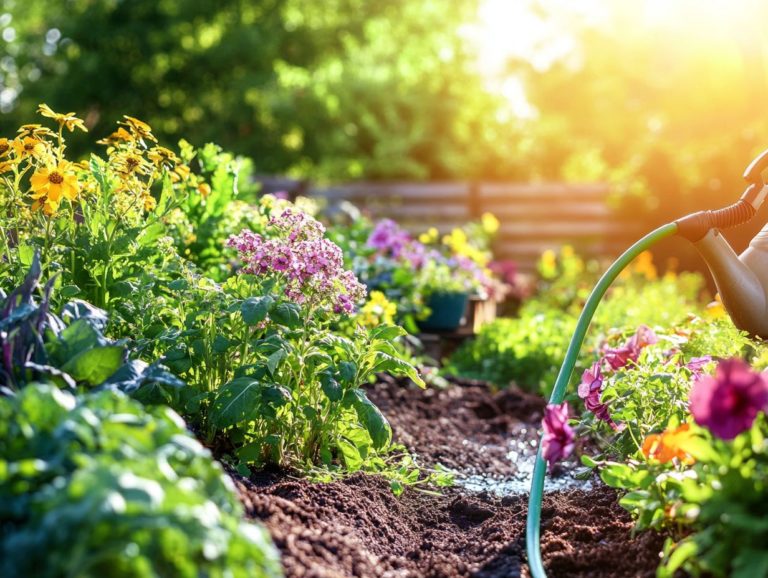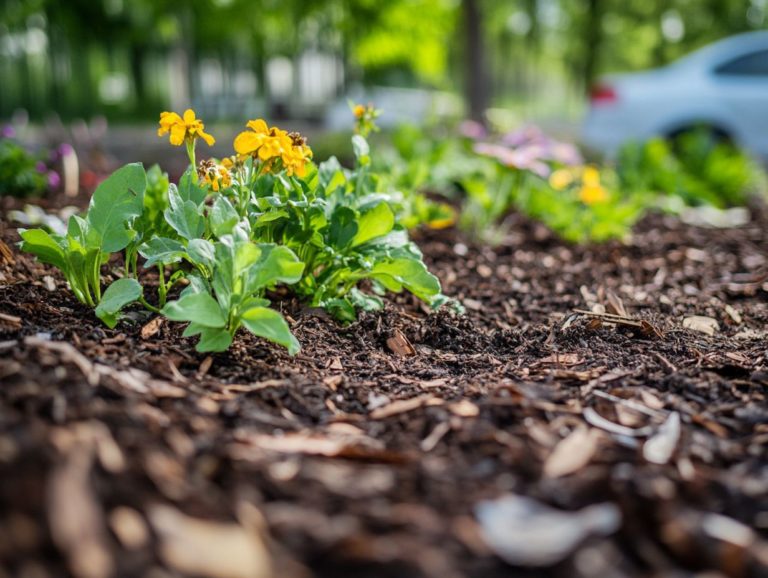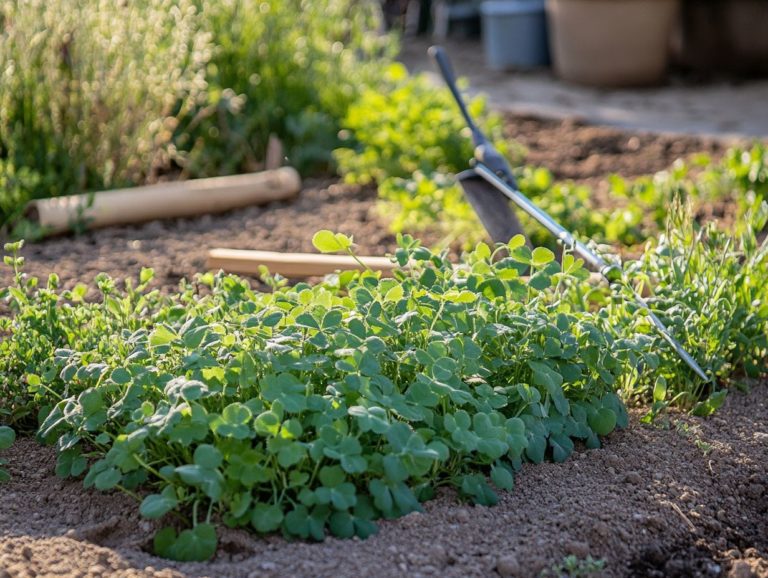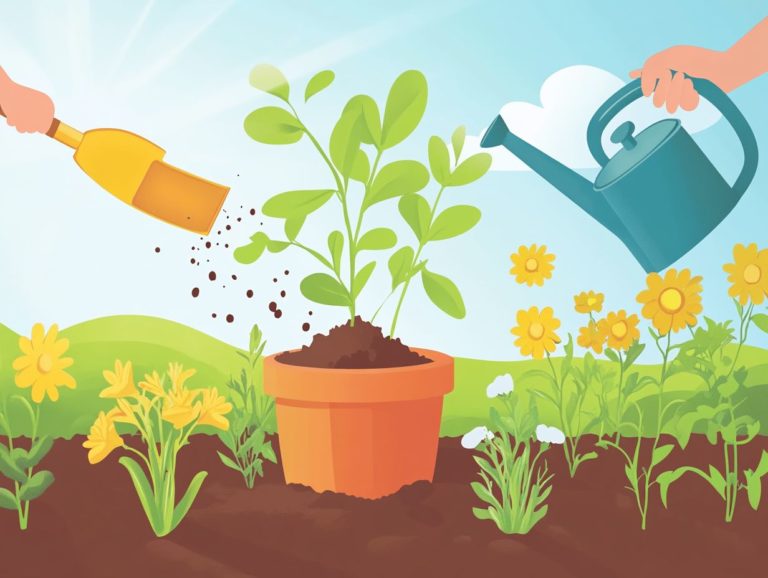How to Create a Drought Plant Care Plan
Drought presents a formidable challenge to plant health, influencing everything from growth patterns to overall vitality. Understanding how drought affects your plants is crucial for gardeners who want to thrive in adversity.
Act now to assess your plants needs and help them survive the drought! Discover how to create an effective watering schedule and select drought-resistant varieties that will flourish despite the elements.
Explore practical tips for proper watering techniques, protecting your greenery from extreme heat, and monitoring your garden s response to changing weather.
You will learn how to create a resilient drought plant care plan that ensures your plants thrive even during the driest spells.
Contents
- Key Takeaways:
- Understanding Drought and its Effects on Plants
- Creating a Drought Plant Care Plan
- Implementing Your Drought Plant Care Plan
- Monitoring and Adjusting Your Plan
- Frequently Asked Questions
- What is a drought plant care plan?
- Why is it important to have a drought plant care plan?
- How do I choose drought-resistant plants for my care plan?
- What are some strategies for conserving water in a drought plant care plan?
- How often should I water my plants in a drought care plan?
- What are some signs that my plants need more water in a drought care plan?
Key Takeaways:
- Understand what drought is and how it affects plants.
- Assess your plant’s needs and develop a watering schedule.
- Choose drought-resistant plants and use effective watering techniques.
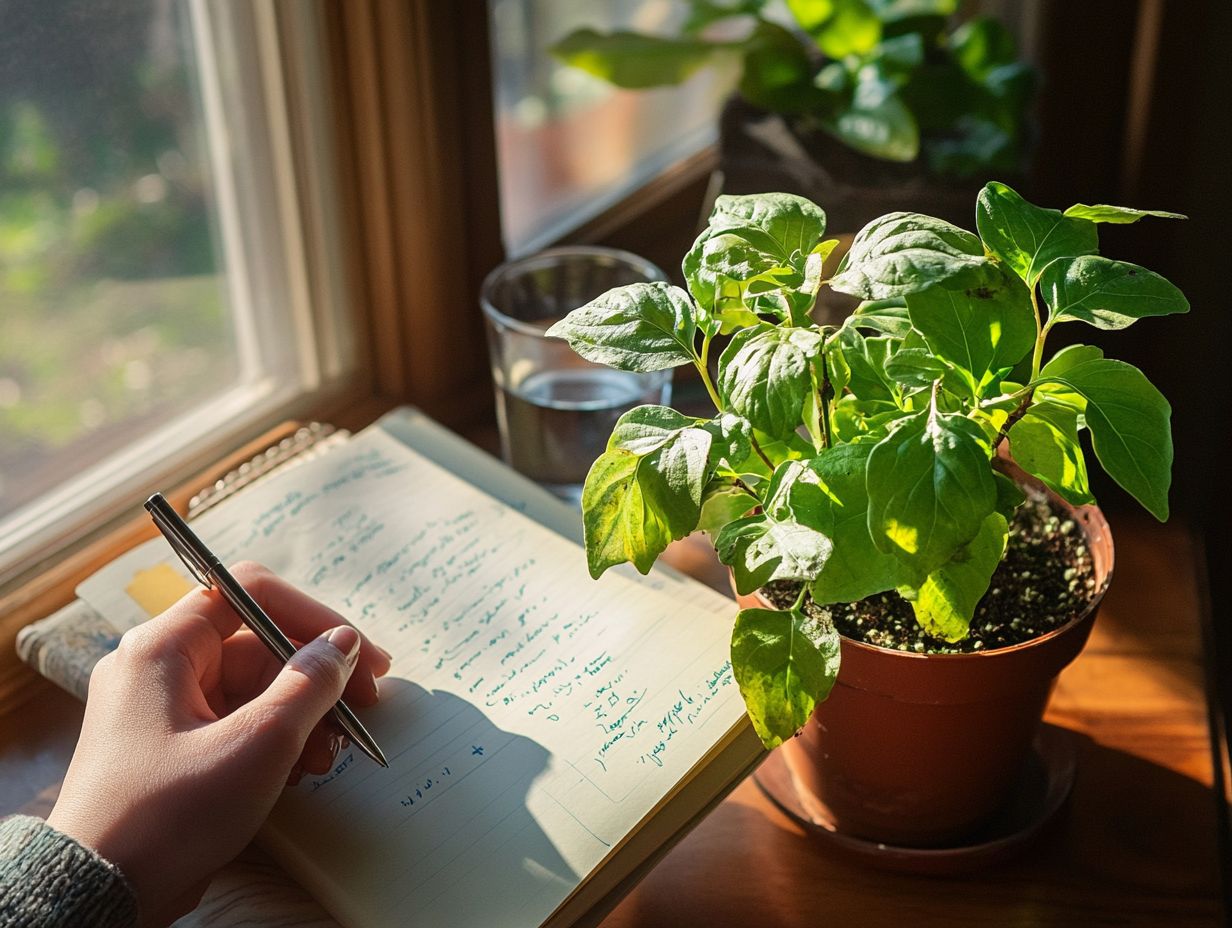
Understanding Drought and its Effects on Plants
Drought is an extended period of low rainfall, which can diminish soil moisture levels and jeopardize the health of various plants, including trees, shrubs, and grass.
In regions like Atlanta, Georgia, or Kenosha and Racine, plants not suited to withstand drought may face serious challenges. Gardeners in these areas must adopt effective strategies to mitigate drought stress.
Grasping how drought impacts plant life is vital for growing healthy plants that save water and nutrients.
What is Drought and How Does it Affect Plants?
Drought is a prolonged period of insufficient moisture that significantly impacts plant health and growth. During these dry spells, many plants struggle with reduced growth rates since limited water hampers their ability to convert sunlight into food.
Without adequate soil moisture, plants become more vulnerable to pest infestations, as weakened specimens have a harder time defending against harmful insects. You might also notice nutrient deficiencies arising from compromised root systems struggling to absorb essential minerals.
The relationship between soil moisture and plant health is critical. Interestingly, some plants show impressive resilience to drought, adapting to thrive in arid conditions.
Creating a Drought Plant Care Plan
Creating an effective drought plant care plan is key for keeping your garden thriving during water shortages. Knowing how to plan your garden for drought seasons ensures that your plants, whether trees, shrubs, or grass, receive the essential care needed to withstand drought.
This comprehensive plan should include:
- Proper mulch application
- Efficient irrigation methods like drip irrigation or soaker hoses
- Selecting drought-resistant plants that thrive in harsh conditions while conserving soil moisture and nutrients
By prioritizing these strategies, you can cultivate a sustainable landscape that conserves water and supports vibrant plant health.
Assessing Your Plants’ Needs
Assessing your plants’ needs is essential for nurturing their growth and resilience during drought conditions, especially if you’re interested in how to create a sustainable drought garden.
This involves evaluating the specific moisture and nutrient requirements of different plant species to ensure proper care. While some thrive in well-draining soil, others prefer a consistently moist environment. Tools like moisture meters can provide accurate soil moisture readings, guiding effective watering.
Identifying signs of drought stress, such as wilting or yellowing leaves, prompts timely action. Incorporating amendments like compost boosts organic matter and helps retain moisture, ultimately supporting your plants health and vigor.
Developing a Watering Schedule
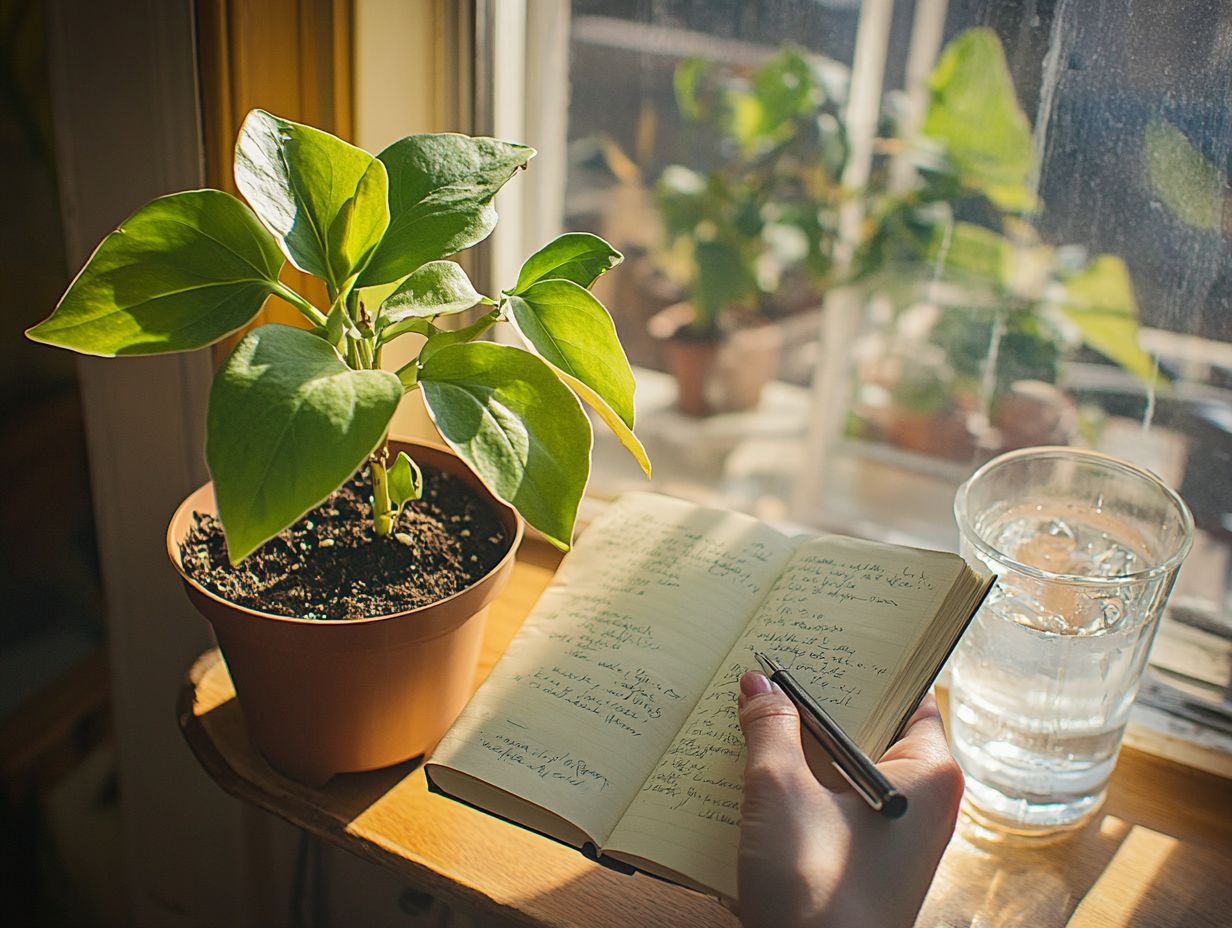
Developing a tailored watering schedule is essential for optimizing moisture levels in your garden. This ensures that your plants receive the hydration they need without any waste.
When crafting this schedule, consider several critical factors, including the specific types of plants you’re growing, the texture of your soil, and the prevailing climate conditions in your area. For example, if you have sandy soil, it drains quickly, so you’ll need to water more frequently. In contrast, clay soil retains moisture longer, which changes your approach.
Using efficient watering methods like drip irrigation delivers water directly to the roots, minimizing waste. Another method is soaker hoses, which also help with efficiency. Timing is crucial; watering early in the morning or late in the evening minimizes evaporation, allowing your plants to absorb water during the cooler parts of the day.
Choosing Drought-Resistant Plants
Choosing drought-resistant plants is an exciting way to create a sustainable garden that thrives with minimal water input. This decision not only conserves water but also nurtures a resilient ecosystem capable of adapting to changing climate conditions.
For gardeners in areas like Atlanta and Kenosha, selecting the right mix of shrubs, trees, and flowering annuals is essential. Consider incorporating vibrant options like Russian Sage, celebrated for its striking purple blooms and its ability to attract pollinators. The hardy Daylily is another fantastic choice, requiring very little maintenance while showcasing a delightful array of colors.
Native plants, such as Black-eyed Susans and Butterfly Bush, enhance biodiversity and lessen your watering needs. Implementing these drought-tolerant species will help you cultivate a flourishing garden that honors the environment and keeps maintenance to a minimum.
Implementing Your Drought Plant Care Plan
Successfully implementing your drought plant care plan requires a thoughtful approach with proactive measures. For guidance on how to create a drought-resistant garden, these measures shield your plants from extreme heat while maintaining optimal moisture levels in the soil throughout the growing season.
Employing effective watering techniques, such as deep root watering and mulching, is crucial for sustaining the health of your grass, trees, and shrubs particularly during the height of summer.
By embracing these strategies, you can significantly alleviate drought stress on your plants, ensuring a vibrant and thriving landscape, even in challenging conditions.
Tips for Proper Watering Techniques
Adopting the right watering techniques is essential for ensuring your plants receive the moisture they need to thrive, especially during challenging periods of drought.
Understanding the difference between deep watering and frequent shallow watering can greatly influence the health of your plants. Deep watering encourages roots to penetrate further into the soil, fostering resilience against dry spells. In contrast, frequent shallow watering often leads to a weaker root system that struggles when conditions become tough.
Utilizing drip irrigation and soaker hoses offers an efficient method to deliver moisture directly to the roots, reducing evaporation and runoff. Timing your watering is equally important; most plants thrive with early morning watering when temperatures are cooler.
Take into account the specific types of plants and soil conditions you re working with, and adjust your watering frequency based on how quickly the soil dries out. This will ensure optimal hydration.
Protecting Plants from Extreme Heat
Protecting your plants from extreme heat is essential during drought conditions. High temperatures can intensify stress, leading to wilting or even death.
To shield them from these harsh realities, consider employing practical strategies. Using shade cloth provides immediate relief by filtering sunlight. Applying a thick layer of mulch around the base of your plants helps conserve soil moisture and keeps the roots cooler.
Ensuring proper air circulation is equally important. It mitigates heat buildup and lowers the risk of fungal diseases. Cultivating healthy soil enriched with organic matter boosts your plants’ resilience against heat and enhances water retention.
These measures create a more favorable microclimate for your plants to thrive, even during challenging weather conditions.
Monitoring and Adjusting Your Plan
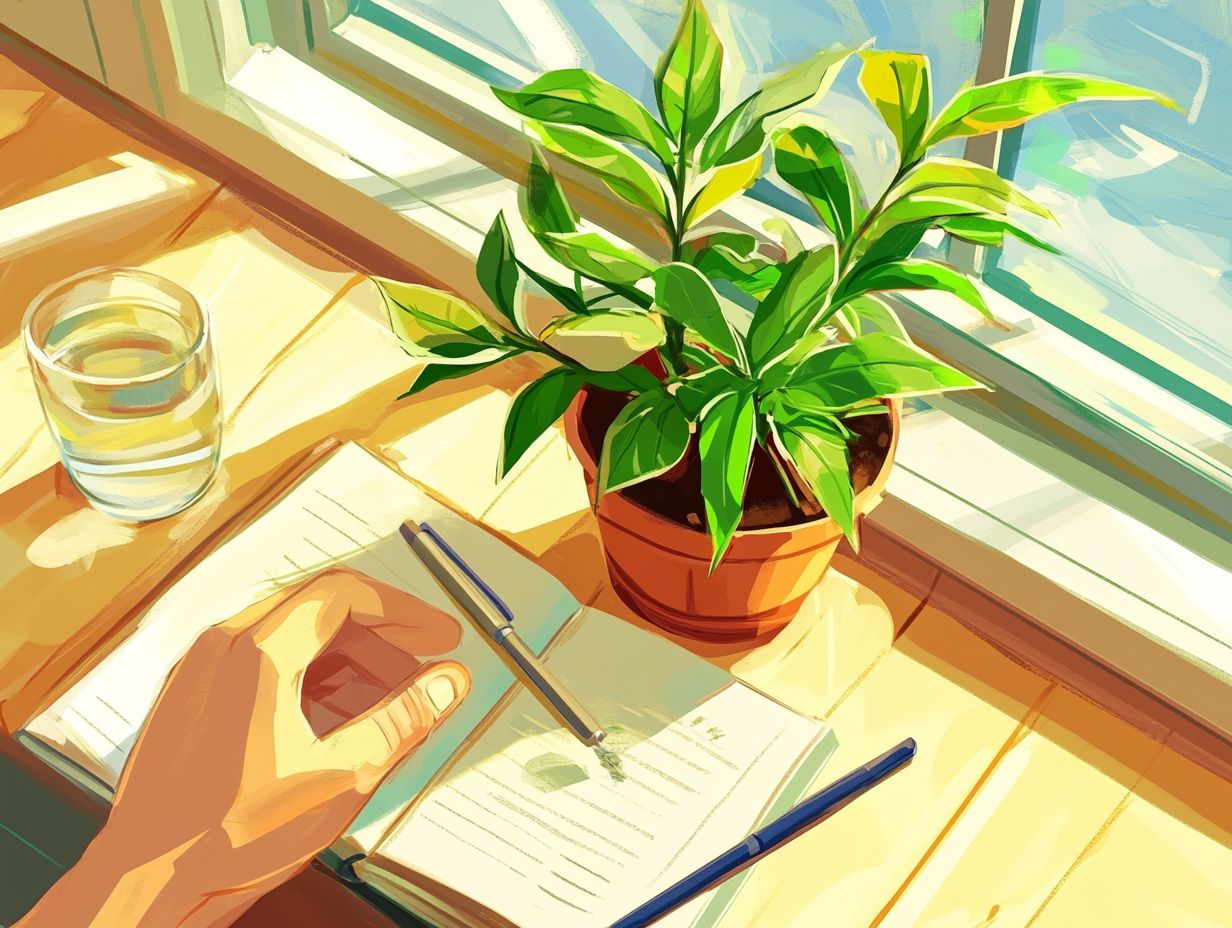
Monitoring and fine-tuning your drought plant care plan is crucial for adapting to ever-changing conditions. For those looking to enhance their efforts, learning how to design a drought-tolerant garden ensures the vitality of your plants throughout the growing season.
Signs of Drought Stress and How to Address Them
Recognizing the signs of drought stress in your plants is essential for timely care during dry spells. Look for symptoms like wilting leaves, noticeable discoloration, or stunted growth.
When you notice these signs, it s crucial to act swiftly. They indicate that your plant isn t getting enough moisture, which, if ignored, could lead to long-term damage.
Adjusting your watering techniques is a vital first step. Aim to water deeply but less frequently to encourage robust root growth. Applying mulch can help retain moisture in the soil.
Incorporating organic compost enhances soil health. This improves water retention and nutrient availability, supporting resilient plant growth even in challenging conditions.
Adjusting Your Plan Based on Weather Patterns
Adjusting your plant care plan to align with local weather patterns is essential for maximizing moisture retention and minimizing water waste during drought conditions. Utilizing visual aids for drought plant care can further enhance your efforts.
Regularly checking local weather forecasts helps you anticipate rainfall or dry spells. This allows you to fine-tune your watering schedules accordingly.
Understanding seasonal changes, like the transition from wet to dry months, plays a crucial role in managing soil moisture levels effectively.
By watching weather predictions, you can prepare your garden for unexpected variations, such as sudden heat waves or unseasonal storms. This proactive approach nurtures healthier plants while supporting responsible water use.
Frequently Asked Questions
What is a drought plant care plan?
A drought plant care plan is a set of guidelines and practices to maintain the health and survival of plants during periods of limited water availability. It includes strategies for conserving water, choosing drought-resistant plants, and adapting watering schedules.
Why is it important to have a drought plant care plan?
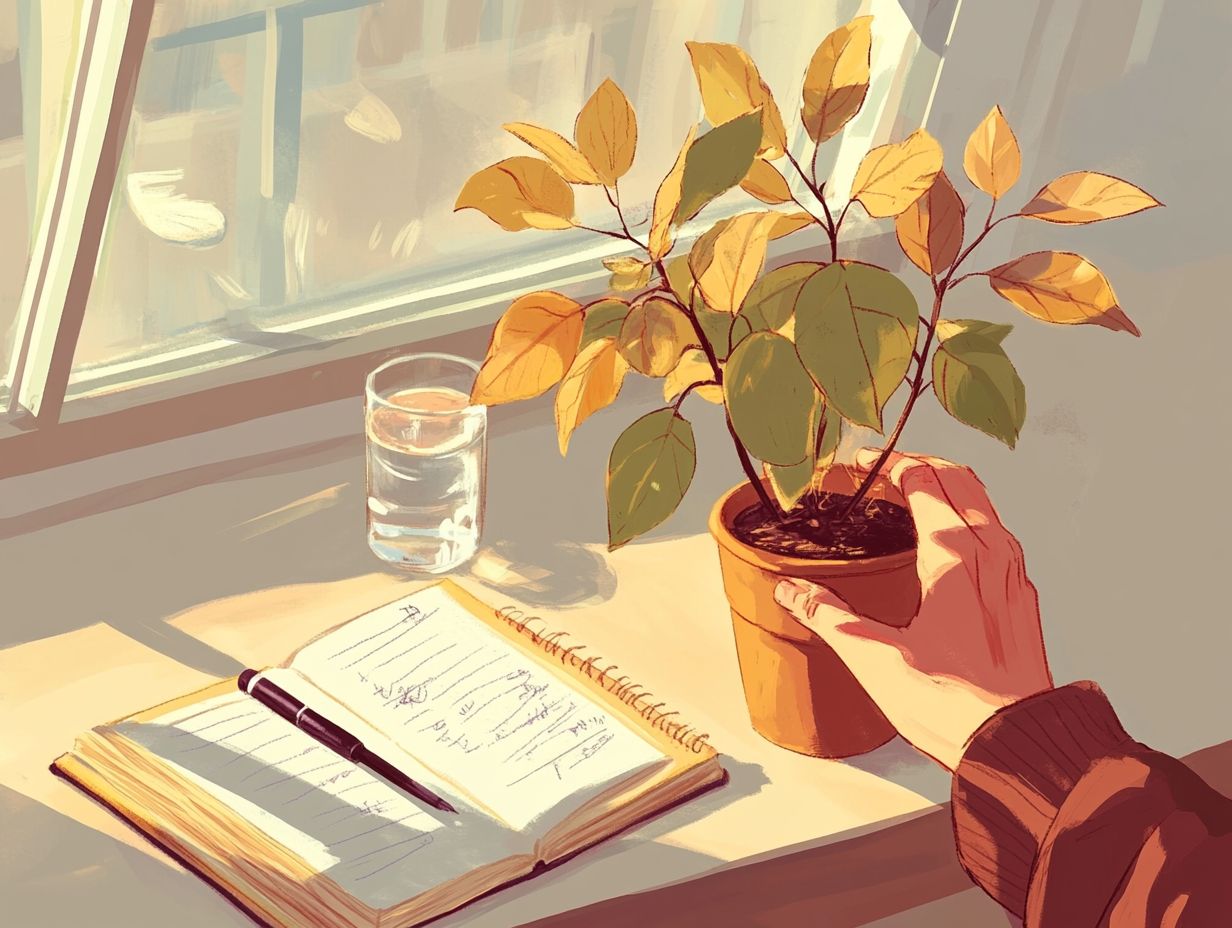
Droughts can significantly impact plant health and lead to plant death if not managed properly. Implementing a drought plant care plan, including how to create a wildlife-friendly drought garden, helps ensure the survival of your plants and conserve water, which is essential during droughts.
How do I choose drought-resistant plants for my care plan?
When selecting plants for your drought care plan, look for those native to your region that thrive in dry conditions. For more guidance, check out how to design a drought-tolerant landscape. Succulents, cacti, and certain grasses are great options.
Start protecting your plants today and share your success stories with us!
What are some strategies for conserving water in a drought plant care plan?
To conserve water during a drought, use mulch, drip irrigation, and collect rainwater. These methods lower water use while keeping your plants healthy.
How often should I water my plants in a drought care plan?
Watering frequency depends on your plant’s needs and the drought’s severity. Water deeply and less often to encourage strong root growth. Avoid watering during peak heat to reduce evaporation.
What are some signs that my plants need more water in a drought care plan?
Watch for signs that your plants need water, like wilting, yellowing leaves, or slow growth. Regular monitoring and adjusting your watering schedule can make a big difference.

